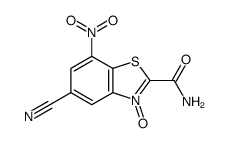Plk1 and CK2 act in concert to regulate Rad51 during DNA double strand break repair.
Keiko Yata, Janette Lloyd, Sarah Maslen, Jean-Yves Bleuyard, Mark Skehel, Stephen J Smerdon, Fumiko Esashi
Index: Mol. Cell. 45 , 371-383, (2012)
Full Text: HTML
Abstract
Homologous recombination (HR) plays an important role in the maintenance of genome integrity. HR repairs broken DNA during S and G2 phases of the cell cycle but its regulatory mechanisms remain elusive. Here, we report that Polo-like kinase 1 (Plk1), which is vital for cell proliferation and is frequently upregulated in cancer cells, phosphorylates the essential Rad51 recombinase at serine 14 (S14) during the cell cycle and in response to DNA damage. Strikingly, S14 phosphorylation licenses subsequent Rad51 phosphorylation at threonine 13 (T13) by casein kinase 2 (CK2), which in turn triggers direct binding to the Nijmegen breakage syndrome gene product, Nbs1. This mechanism facilitates Rad51 recruitment to damage sites, thus enhancing cellular resistance to genotoxic stresses. Our results uncover a role of Plk1 in linking DNA damage recognition with HR repair and suggest a molecular mechanism for cancer development associated with elevated activity of Plk1.Copyright © 2012 Elsevier Inc. All rights reserved.
Related Compounds
| Structure | Name/CAS No. | Molecular Formula | Articles |
|---|---|---|---|
 |
BTO-1
CAS:40647-02-7 |
C9H4N4O4S |
|
Inhibitors of Polo-like kinase reveal roles in spindle-pole ...
2006-11-01 [Nat. Chem. Biol. 2 , 608-617, (2006)] |
|
Two High Throughput Screen Assays for Measurement of TNF-α i...
2011-01-01 [Curr. Chem. Genomics 5 , 21-9, (2011)] |
|
The transforming parasite Theileria co-opts host cell mitoti...
2010-01-01 [PLoS Biol. 8 , (2010)] |
|
Plk1 self-organization and priming phosphorylation of HsCYK-...
2009-05-05 [PLoS Biol. 7 , e1000111, (2009)] |